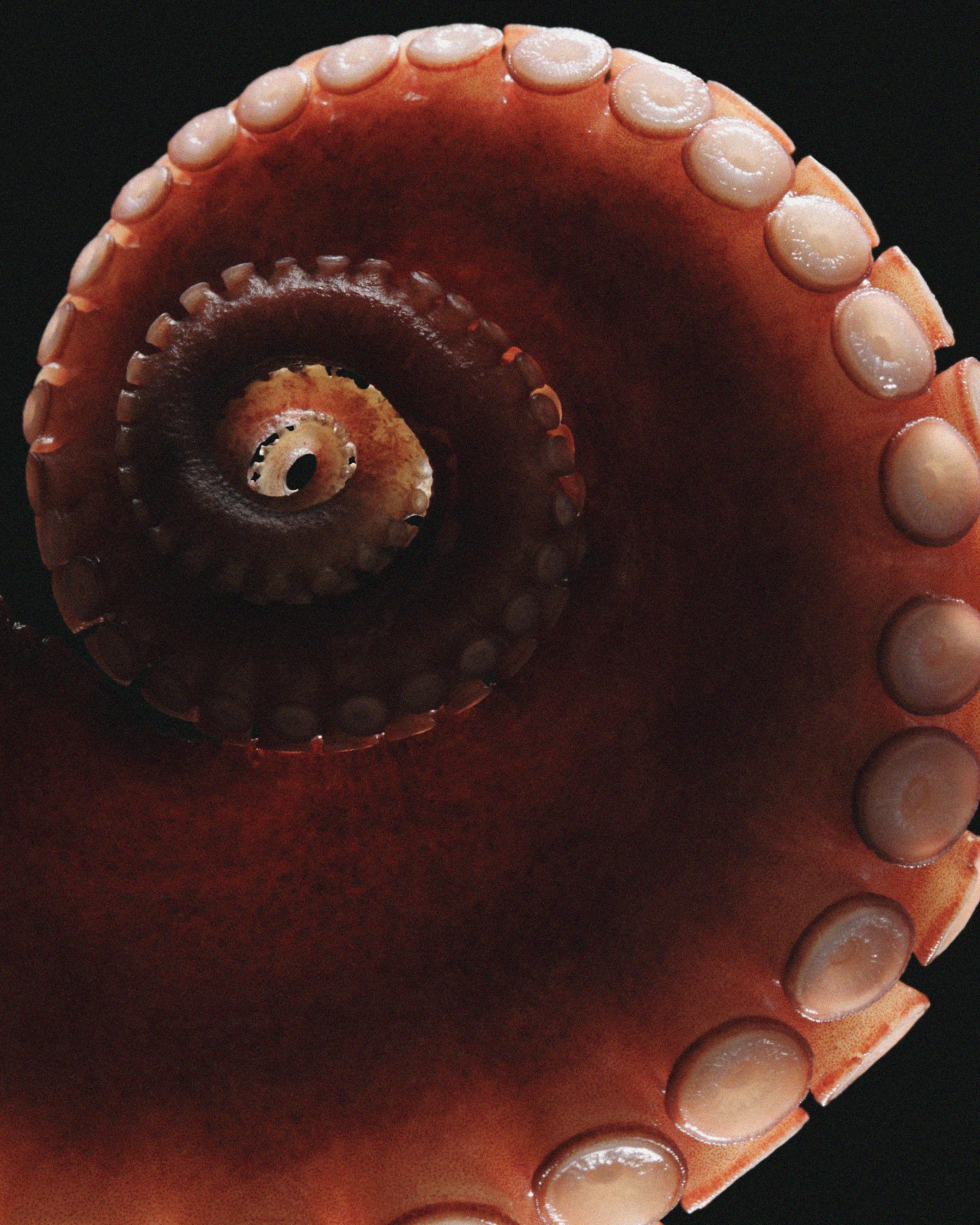

Photograph by Paul Taylor / Getty Images
words by willow defebaugh
“The measure of intelligence is the ability to change.”
Nine brains equipped for problem-solving. Eight arms covered in hundreds of suction cups. Three hearts pumping blue blood. One beak for crushing prey. Zero bones to break. The anatomy of octopuses feels more alien than any other animal we share the Earth with. Perhaps that is why we are so mesmerized by these creatures: their otherworldly ways of wading through the inky black waters they inhabit, the remarkable intelligence with which they are able to adapt.
For as extraterrestrial as they seem, octopuses have been native to this planet far longer than we have. They are cephalopods, a group of invertebrates containing octopuses, squids, cuttlefish, and nautiluses. Before fish swam the seas, cephalopods evolved over 500 million years ago from an animal with a pointed shell. Over time, they grew to be formidable predators, among the first to hunt Earth’s ancient waters. Today, 300 known species of octopuses exist—ranging from two inches to 18 feet—exhibiting some of the most extraordinary gifts ever uncoiled by evolution.
Octopuses are among the smartest invertebrates, capable of carrying out complex actions and solving puzzles. They can open shells and coconuts, manipulate rocks, build shelters, and even deconstruct aquarium filtration systems. The common octopus contains 500 million neurons, while honeybees have around one million, rats 200 million, and cats 700 million. What makes octopuses unique is how they are distributed. In these other animals, most neurons are located in their head; for octopuses, the majority are in their arms. In addition to their central brain, clusters of neurons that act as smaller brains can be found in each limb—a kind of embodied awareness.
These animals are able to quickly adapt to their changing circumstances, demonstrating the most miraculous of feats: camouflage. Tiny sacs in the top layer of their skin contain pigments; when the surrounding muscles contract, the sacs open to reveal colors in all kinds of hues. Depending on which sacs they open, different patterns can be produced. By manipulating other muscles, they can also change the texture of their skin from smooth to spiky. The algae octopus can even generate wispy structures to make it appear as seaweed. Finally, by altering their posture, octopuses can take the shape of the scapes they slink across, such as rocks and corals.
Because octopuses are boneless, they can be devoured whole—a weakness that gave way to evolving many clever ways of evading danger. Aside from camouflage, their boneless bodies allow them a certain fluidity fitting for their underwater habitats. They can squeeze their shapes into narrow hiding places and pull off narrow escapes through even the tightest spaces. When caught by surprise, they can squirt clouds of black ink that not only shroud them from sight, but smell. By expelling water, they can promptly propel themselves out of harm’s way. And if they are attacked by predators, they can regenerate any limbs lost.
Every one of the hundreds of suction cups that dot an octopus’s arm is capable of independent movement and sensation. Each sucker is covered in taste receptors, making their limbs function not only as arms but tongues that help them gather swaths of sensory information as they slither across their habitats. This is helpful in navigating tricky terrains—namely reefs, where they can use all eight arms at once to simultaneously search for morsels of food (oysters, fish, and crabs) and potential safeholds. In uncertain waters, they let their senses guide them.
Our world is forever changing form; in some ways, it feels more alien by the day. So much rests on our ability to acclimate and adapt. Octopuses remind us that we can meet life’s murkiest and most quizzical depths with a soft intelligence—one not of hard lines, but muscles that stretch and take new shapes and shades. Flushes of changing color, instinct felt in the flesh. Sensing our way through. A knowing that lives in the body, bones or not.
Life and Limb